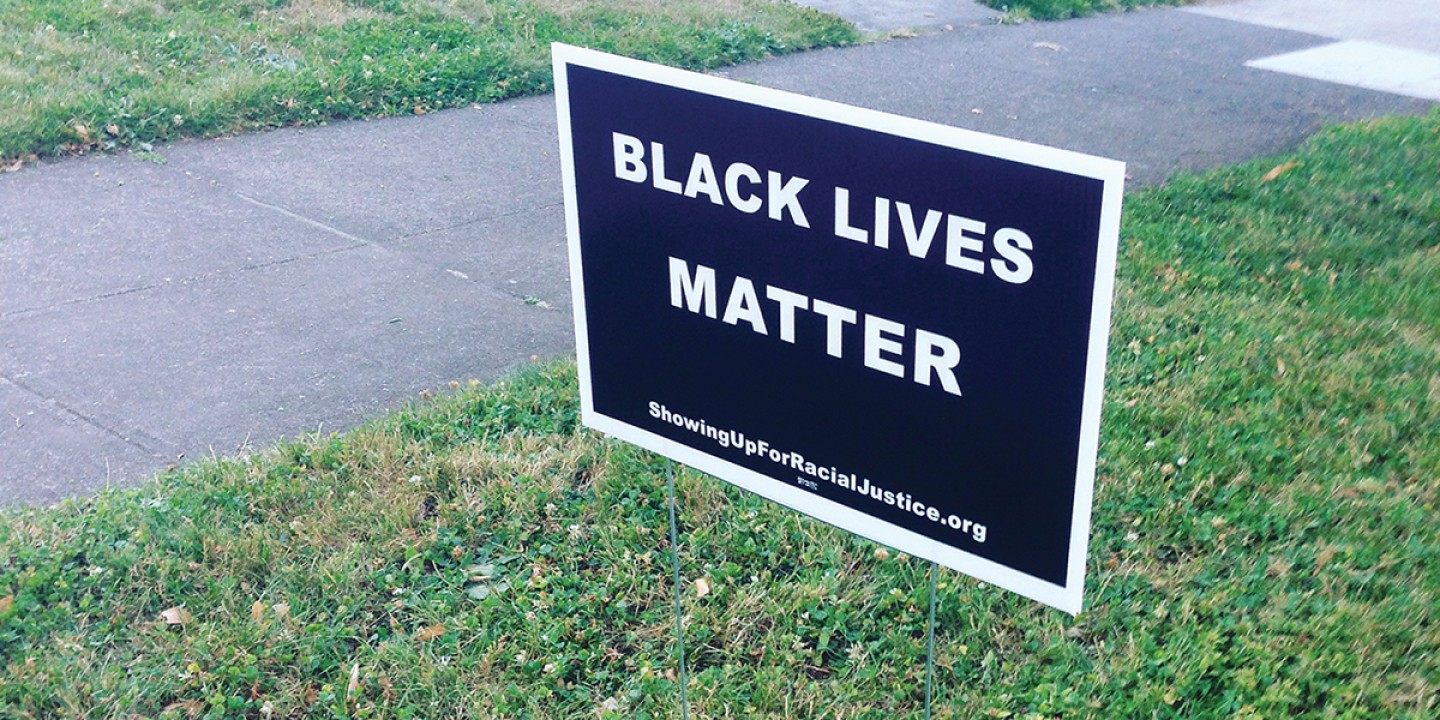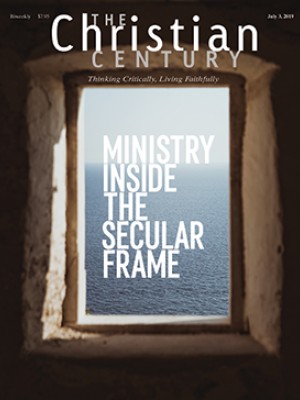What happened after my mostly white church put up a Black Lives Matter sign
It got stolen, and I got scared.

As a mostly white congregation in a predominately white rural town in Illinois, we knew the gospel had something to say about racism, but we had little idea what to say ourselves, either through words or action. We had followed the heartbreaking news of the murder of Michael Brown in Ferguson, Missouri, in 2014, participated occasionally in marches in Ferguson, traveled to Mississippi to learn from activist and community developer John Perkins, hosted his grandson “Big John” Perkins for a talk at our church, and learned about racism from some courageous university students in our congregation who spoke from personal experience.
This was all necessary learning and information gathering, but not action. Not knowing what to do exactly, we knew we should do something. Our sexton had purchased a Black Lives Matter sign while marching in Ferguson, and so in the summer of 2015, after a short discussion among church staff, St. Paul’s Free Methodist Church displayed a BLM sign on our church lawn.
Read our latest issue or browse back issues.
Our sign was stolen the first week it was displayed. We replaced it. All Lives Matter signs began appearing on lawns all over town, along with “We support our officers” bumper stickers and shop decals. One day my eight-year-old son was riding his bike down our church’s street when he noticed an ALM sign a few doors down from our church. “Dad,” he said, “they have a sign like we do, but it says “All lives matter.”
I asked him what he thought about it. He said he liked the ALM sign better. I asked, “Do you think that when we say black lives matter, we are saying we don’t think other lives matter?”
“Of course not,” he replied. “Of course not,” I echoed. “We just think it’s important to say black lives matter because we live in a country where black lives have been consistently treated like they don’t matter.”
Our church has lost count of how many times our BLM sign has been stolen. We have received angry letters from local citizens (including parishioners from a sister church) and anonymous phone calls, and had an ALM sign put up after someone stole our BLM sign. Obviously we struck a nerve. Our church became known in our community as the “Black Lives Matter church.” But congregants at St. Paul’s often joke that we should accompany our sign with one that says #whitepeopletrying.
Our decision to place the sign on our lawn was not the result of any grand social justice philosophy, nor a comprehensive assessment of BLM. We appreciate the contributions of such assessments in reconciliation work even if they did not directly inform our action in this instance. Our decision was more what theologian Samuel Wells calls an improvisation, an attempt to be faithful disciples at this moment, moving one step at a time.
An improvisational approach to discipleship allowed our church to move forward without being paralyzed by board meetings, building church consensus, debating the perfect justness of the cause, and other dynamics that can delay action. Improvisation has been training us to be a community of discernment that develops the skill to see the obvious thing we should be doing and saying as we follow Jesus. We were never trying to do a big thing, but we have discovered that with this one step of solidarity came a much larger world of discipleship.
I once heard a sermon explaining that when Peter confessed Christ at Caesarea Philippi he was both confessing the truth about Christ and also his sin of being too nervous to follow Jesus to the cross. That is precisely my own confession. Replacing the stolen signs makes me nervous. I’m embarrassed by my fear because I know whatever price I have paid is small compared to that of others.
Even though I’m a pastor at St. Paul’s, I have not placed a BLM sign on my own lawn. When I had to call the local heating and cooling company to fix the air conditioner at St. Paul’s and then again a day later at my home, I wondered whether they would connect the dots between my church’s witness and my own, and I was nervous.
It has been said that for the privileged, equality feels like oppression. I would add that for white people like me, pushback feels like persecution. The prospect that I would, on behalf of my neighbor, place myself or family at risk makes me nervous. Herein lies my deeper sin.
Theologian James Cone would point out that my family is already suffering and in danger. In his critique of Reinhold Niebuhr, Cone wrote that “Niebuhr had ‘eyes to see’ black suffering,” but “lacked the ‘heart to feel’ it as his own.” That inability to feel the suffering of others causes damage to one’s own soul as well as to the broader community.
The church is enlarging my heart and helping me follow Jesus better than I could on my own. The sign on our church lawn reminds me again and again of the work that I still need to do, in my own heart, mind, life, and community. But the sign is not the end of our discipleship; it is simply one improvisation among others by which our church is learning to embrace God’s beloved family rather than our nervous fears.
A version of this article appears in the print edition under the title “Embarrassing fear.”





